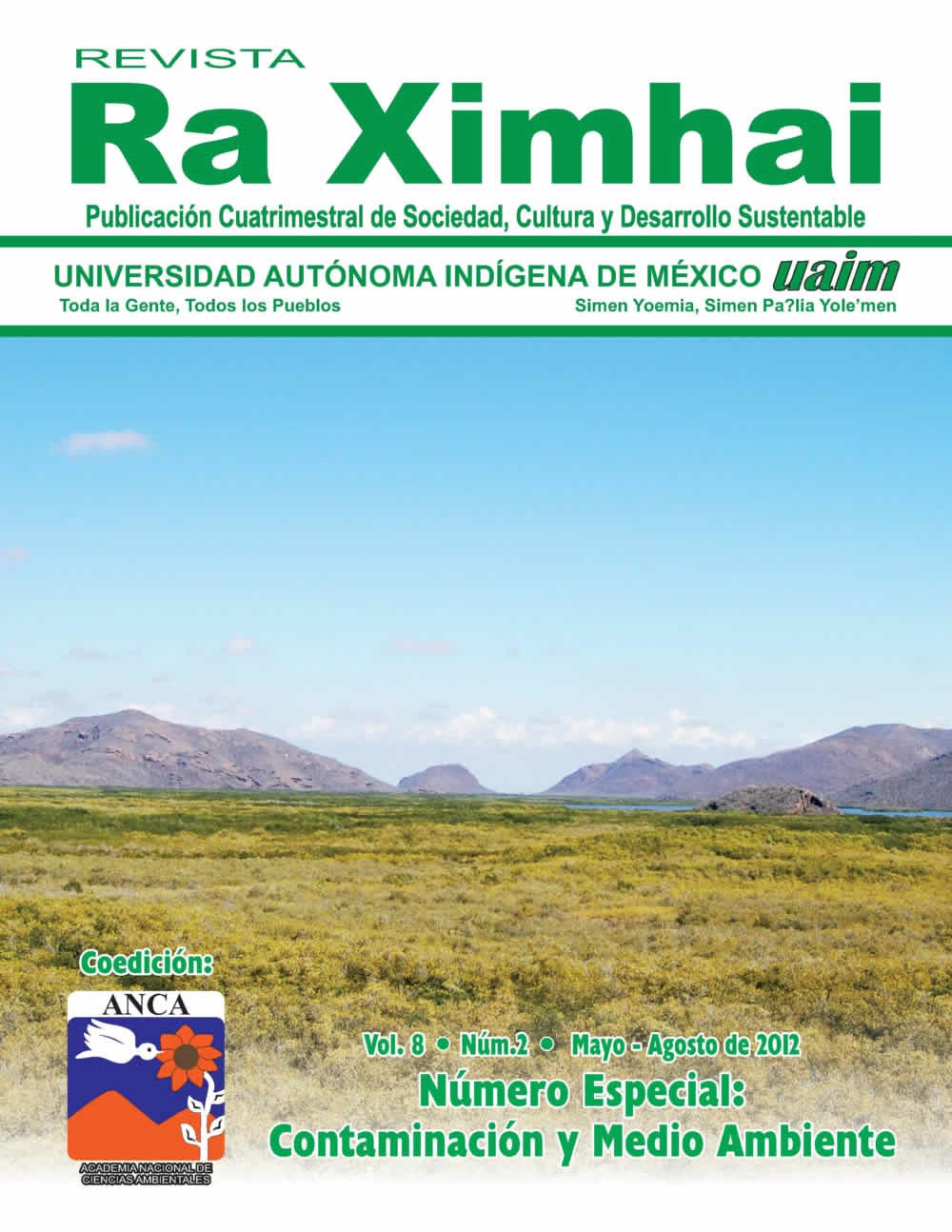The spatial dynamics of the ecosystems of the State of Durango
DOI:
https://doi.org/10.35197/rx.08.02.e.2012.07.jrKeywords:
ecosystems, disturbed, changeAbstract
This research aims to determine the spatial dynamics of ecosystems in the state of Durango through a prediction model obtained using the STELLA software, feeding it with the variables of degradation, deterioration and recovery, which were obtained from the Geomatics area of CONAFOR, 2007. The model represents the dynamics of the surface over a period of eight years (1994 to 2002). The results show that forest ecosystems are the most deforested and degraded, however they are also the ones that recover the most, unlike grasslands and scrublands; these last ecosystems show a change in spatial dynamics and are the ones that recover the slowest.
Downloads
References
CONAFOR(2007).Especificaciones técnicas para el monitoreo de la cobertura de la vegetación basado en imágenes de satélite MODIS. htp://www.conafor.gob.mx/ portal/ index.php?l1=4&l2=3&l3=2 (Consultado el 22 de Agosto de 2007).
Dirzo, R. y Masera, O.(1996).Clasificación y dinámica de la vegetación en México. En: Criterios y terminología para analizar la deforestación en México. SEMARNAP, México.
INEGI, (Instituto Nacional de Estadística, Geografía e Informática) 1993. Cartografía de uso de suelo y vegetación Serie II.
Gobierno del estado de Durango y SEMARNAT (Secretaría de Medio Ambiente y Recursos Naturales)( 2008). Ordenamiento Ecológico del Estado de Durango. Gobierno del estado de Durango, Pp. 1-64.
INEGI, (Instituto Nacional de Estadística, Geografía e Informática), (2000). Marco Geoestadístico. Instituto Nacional de Estadística, Geografía e Informática. México. http://www.inegi.gob.mx/ geografia/espanol/ estados/dgo.htm (consultado 10 de enero de 2010).
INEGI, (Instituto Nacional de Estadística, Geografía e Informática). ( 2011). Información estadística nacional por entidad federativa y municipio. Datos estadísticas ambientales (http://www.inegi.org.mx/ consultado 15 de agosto de 2011).
SIGEED (Sistemas de información Geográfica de los Ecosistemas del Estado de Durango) (2009). Mapas de los ecosistemas del estado de Durango. http://www.ujed. mx/sigeed/ (Consultado el 8 de noviembre de 2009).
SARH, Inventario Nacional Forestal Periódico, (1992-1994).Subsecretaría Forestal y de Fauna Silvestre, SARH, México.
SEMARNAT(Secretaría del Medio Ambiente y Recursos Naturales) (2008). Sistema Nacional de Información Ambiental y de Recursos Naturales. Datos Estadísticos. Secretaría de Medio Ambiente y Recursos Naturales. http:// www.semarnat.gob.mx/ informacionambiental//.
Downloads
Published
How to Cite
Issue
Section
License
Copyright (c) 2012 F. J. Rodríguez F. , M. E. Pereda S.

This work is licensed under a Creative Commons Attribution-NonCommercial 4.0 International License.
Usted es libre de:
- Compartir — copiar y redistribuir el material en cualquier medio o formato
- Adaptar — remezclar, transformar y construir a partir del material
- La licenciante no puede revocar estas libertades en tanto usted siga los términos de la licencia
Bajo los siguientes términos:
- Atribución — Usted debe dar crédito de manera adecuada , brindar un enlace a la licencia, e indicar si se han realizado cambios . Puede hacerlo en cualquier forma razonable, pero no de forma tal que sugiera que usted o su uso tienen el apoyo de la licenciante.
- NoComercial — Usted no puede hacer uso del material con propósitos comerciales .
- No hay restricciones adicionales — No puede aplicar términos legales ni medidas tecnológicas que restrinjan legalmente a otras a hacer cualquier uso permitido por la licencia.








